Biomes of Planet Earth
Biomes are major ecological associations that occupy a broad geographic region of land or water. Terrestrial biomes are primarily influenced by temperature and precipitation while aquatic biomes are defined by different abiotic factors with the main distinction being salinity. We will begin our exploration with the aquatic biomes.
Table of Contents
1. Aquatic Biomes
You can classify the major aquatic biomes as belonging to either marine or freshwater biomes. Let’s begin with the marine biome and start with the largest itself: the ocean.
a. Marine Biomes
i. The Ocean: Water that Encircles the Planet

Although the ocean is vast, marine ecosystems within it differ like night and day. You have to consider that the ocean is deep (you might recall the Emden Deep dive in the news before) and that parts of the ocean near the shore will obviously differ with the larger, open expanse of it. As such, the ocean and its substrate (the seafloor) can be categorized further into zones with distinguishing features.
The pelagic zone of the oceans includes all open water while the seafloor is known as the benthic zone. Light diminishes with the ocean’s depth and the part where light is still visible is referred to as the photic zone. The latter usually measures a maximum of 200 m and can include both pelagic and benthic zones in shallow areas, which are parts of continents called the continental shelves.
Organisms that drift with the currents are called plankton, those that swim or move independently are called nekton, while those limited to moving along the seafloor are referred to as the benthos.
In the photic zones, phytoplankton acts as autotrophs and provides energy for a diverse community of organisms. Zooplankton and many other animals are abundant in the pelagic photic zone. Coral reefs are located in the photic zones, because of their zooxanthellae, and provide habitats to various marine organisms.
Where light begins to dim and does not reach marks the aphotic zone. The dimly lit depths, between 200 to 1000 m, are sometimes called the twilight zone. Food sinking from the photic zone provides some sustenance for organisms living in this zone but there are also those that migrate to the surface at night to feed. Some fishes in the twilight zone have enlarged eyes that allow them to see a very dim light and luminescent organs that attract mates and prey.
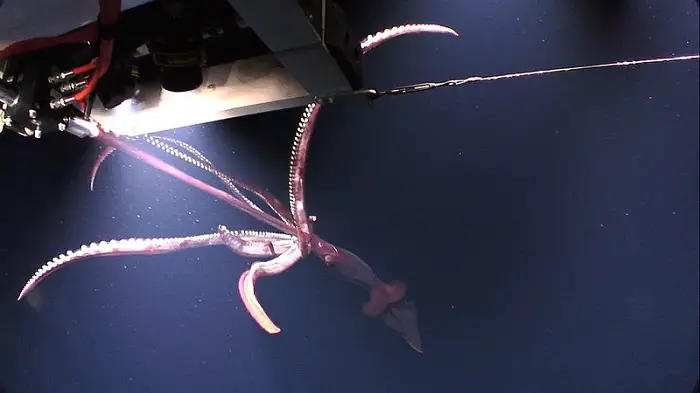
Below the thousand-meter mark, more or less, the ocean is in permanent darkness. Remember also that the water exerts weight and so the deeper you go, the more pressure you have to adapt to. The extreme environments here have led to bizarre and to us are “otherworldly” adaptations the inhabitants have developed for these environmental conditions.
Just look at anglerfishes. There are also cute ones like the Dumbo octopus. Benthic organisms on these zones are usually deposit feeders, those that feed on detritus. The density of animals is low here due to scarcity of food, except on hydrothermal vents where chemoautotrophic bacteria support an abundance of life such as tubeworms.
ii. Intertidal Zone: Where Sea Meets Land and Becomes Less Salty
The marine environment also has distinct biomes where the ocean interfaces with the land or with freshwater. The intertidal zone is the area where the ocean meets land, and where the shore is pounded by waves during high tide but left exposed to the sun and drying winds on low tide.
You can have rocky intertidal zones, which house many sedentary organisms such as barnacles and mussels, or sandy beaches, where clams and other predatory crustaceans bury themselves.
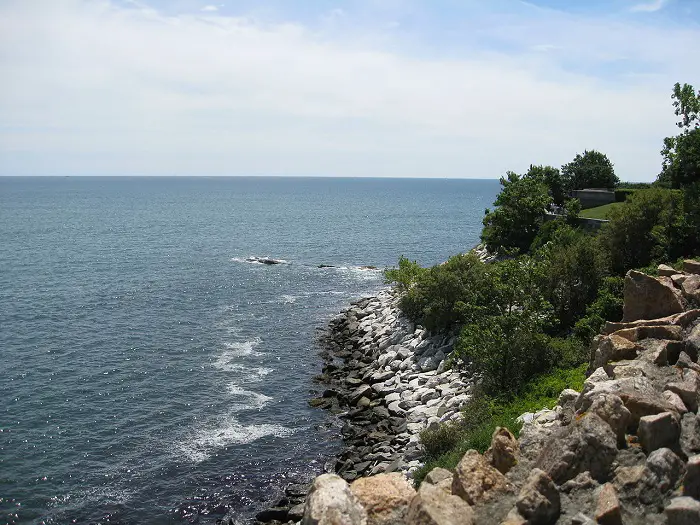
An estuary occurs where freshwater merges with saltwater and so there are gradients to the saltiness, depending on whether you are towards the freshwater or saltwater end of the biome. Estuaries often receive the nutrients carried by their freshwater source and so the biome is one of the most productive biomes on Earth with oysters, crabs, and many fishes living or reproducing in estuaries.
Wetlands are biomes that mark the transition between an aquatic ecosystem and a terrestrial one. They can be covered by water permanently or periodically so they can support the growth of aquatic plants. Mudflats and marshes are coastal wetlands that often border estuaries and experience tidal fluctuations.
b. Freshwater Biomes
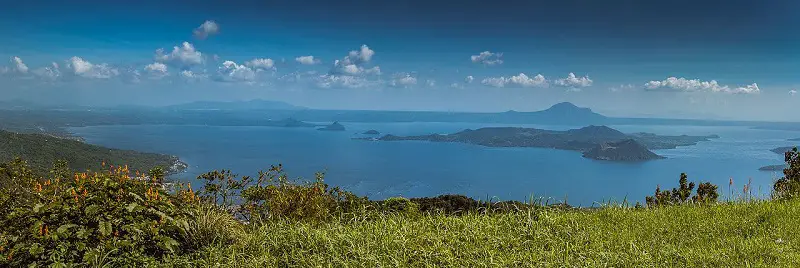
Freshwater biomes fall into two broad categories: standing water and flowing water biomes. The former includes lakes and ponds while the latter involves streams and rivers. Because these biomes are embedded in terrestrial landscapes, their features are closely connected with the soils and organisms of the ecosystems that surround them.
In lakes and large ponds, the ecological communities, just like in the ocean, are distributed according to depth and distance from shore. The mineral nutrients nitrogen and phosphorus typically determine the number of phytoplankton growing in lakes or ponds.
Many lakes and ponds receive nitrogen and phosphorus from sewage and runoff and may result in algal blooms, which reduces light penetration. And when the algae die and decompose, the pond or lake can suffer from severe oxygen depletion, killing fish and other organisms used to high-oxygen conditions.
Rivers and streams support communities of organisms quite differently from those of lakes and ponds. They can differ greatly between their source (perhaps spring and melting snow) and the point where they empty into a lake or the ocean. Near the source, the water is usually clear and oxygen-rich with the swift current inhibiting phytoplankton growth.
Most organisms are supported by photosynthetic algae attached to rocks or by organic material, such as leaves, carried into the water body. Benthic animals are usually arthropods such as small crustaceans and even insect larvae. Fish that hunt by sight, such as trout, can be seen here.
Downstream, these biomes generally widen and slow. The water becomes warmer, lower in oxygen, and murkier due to sediments and other suspended materials. Worms and insects that burrow on mud become abundant, as are waterfowl, frogs, and fish that find food more by scent and taste than sight.
There are also freshwater wetlands that range from marshes to swamps and bogs. Like marine wetlands, they are also high in species diversity and they provide water storage areas that reduce flooding and improve water quality by filtering pollutants.
In the next section, we’ll talk about terrestrial biomes which are grouped into nine major biome types.
2. Terrestrial Biomes
Remember when we mentioned that the rainforests occur near the equator, and how the climate plays a major role in it? You can make a conjecture from it that, if an area experiences a similar climate, then you might view similar terrestrial biomes regardless of location on the planet.
Each biome is characterized by an assemblage of communities adapted to the conditions rather than sharing the same species. We will now begin surveying the nine major terrestrial biomes.
a. Tropical Forests
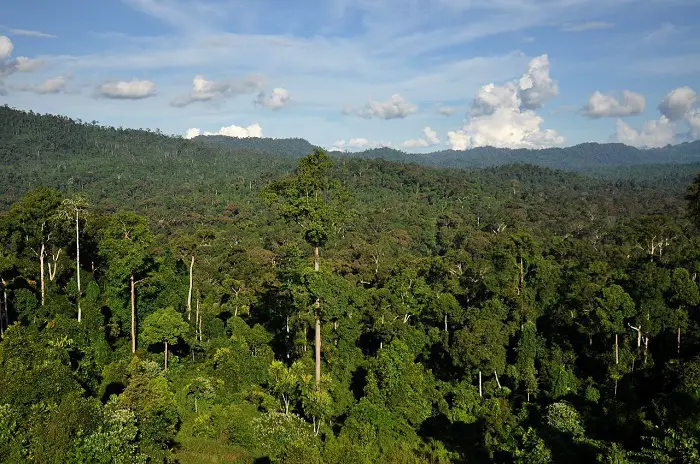
Tropical forests are found in equatorial areas where the temperature is warm and days are 11-12 hours long all year round. The amount of rainfall varies and this variability, rather than temperature or day length, influences the vegetation that grows in a particular tropical forest.
The forest structure is made of distinct layers that provide different habitats: emergent trees growing above a closed upper canopy, one or two layers of lower trees, a shrub understory, and a sparse ground layer of herbaceous plants. The closed canopy causes little sunlight to reach the forest floor. This structure also influences how animals are distributed with most being found above the ground or on treetops where food is more abundant.
The soil of a tropical rain forest is poor due to rapid decomposition and release of nutrients caused by high temperature and rainfall. However, the nutrients are taken up quickly by the lush vegetation or washed away by rain quickly.
b. Savannas
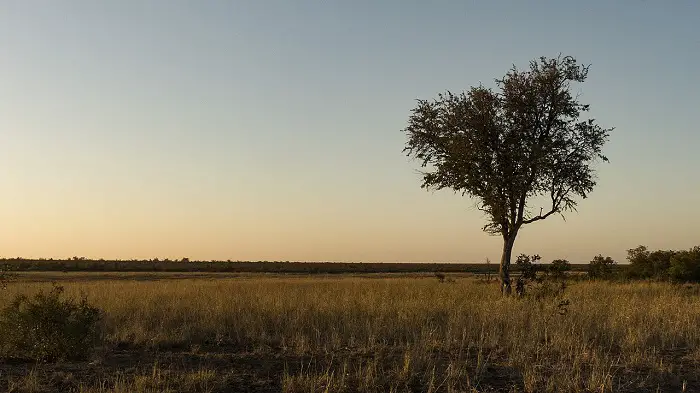
Savannas are biomes dominated by grasses and scattered trees, and where the temperature is also warm all year round. There is also a relatively brief rainy season with the poor soil and lack of moisture preventing more trees from rooting (pun intended) and establishing themselves in the area. Grazing by animals and fires also limits invasion by trees.
Grasses can survive burning because the growing parts of their shoots are below ground. Savanna plants also have the ability to survive prolonged periods of drought. Many trees and shrubs are deciduous and drop their leaves during the dry season.
Grasses and forbs (small broadleaf plants) grow rapidly during the rainy season and provide a good food source for many animals. The dominant herbivores in savannas are actually insects but burrowing animals are also common.
Many of the world’s large herbivores and their predators inhabit savannas. Giraffes, zebras, antelopes, lions, cheetahs, etc. inhabit the African savanna while several kangaroo species are the dominant mammalian herbivores of Australian savannas.
c. Deserts

Deserts are the driest of all terrestrial biomes having low and unpredictable rainfall. Not all desert air is dry; some coastal portions of the Atacama and Namib desert in Africa are often shrouded in fog, but the ground remains extremely dry.
We have mentioned how the deserts are also located where air descends. You can look for the Great Basin Desert in North America and the Desert of Sahara in Africa and find them lying on the same latitudes.
The cycles of growth and reproduction in the desert are linked to rainfall. The driest deserts do not have perennial plants but less arid areas have deep-rooted shrubs and water-storing succulents like cacti.
Desert plants produce many seeds that remain dormant until heavy rain triggers them to germinate. After periods of rainfall, annual plants in deserts may display spectacular blooms.
Desert animals, meanwhile, are used to drought and extreme temperatures. Many animals burrow during the day and are active at night. Most also have adapted features that conserve water.
The process of desertification is a significant environmental problem in some regions since the semi-arid regions are converted into a desert due to human activity. Another important factor to consider is because of its ecological definition, not all deserts are the hot, familiar, quickly-comes-to-mind type. Some of them are cold, with snow and all, so long as precipitation in the areas is sparse.
d. Chaparrals
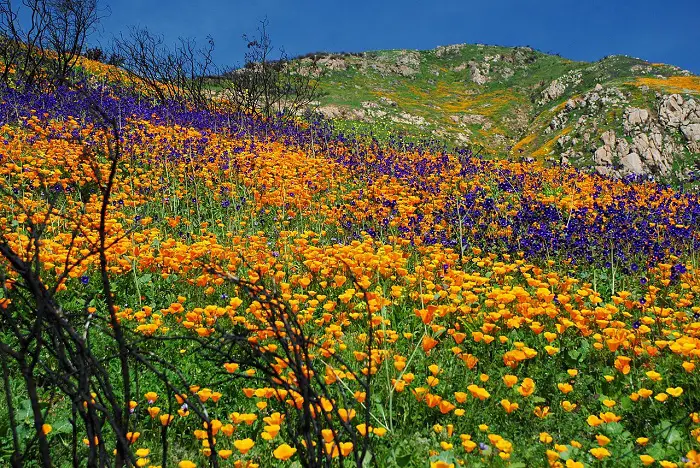
Chaparrals are characterized by dense, spiny shrubs with evergreen leaves. The climate that supports such biomes is mainly due to cool ocean currents that circulate offshore, producing mild, rainy winters and hot, dry summers. And because of this, chaparrals are limited to small coastal areas such as California.
In addition to the shrubs, annual plants are also common in the biome and are more visible during the wet winter and spring months. Animals in the biome include deer, fruit-eating birds, and seed-eating rodents, as well as lizards and snakes.
Vegetations in chaparrals are also adapted to periodic fires, which are more often a result of lightning. After a fire, shrubs use food reserves stored in their surviving roots to support regeneration. Some plants in the biome produce seeds that will germinate only after being exposed to hot fire. The ash of burned vegetation provides nutrients to the soil, further promoting the regeneration of the plant community.
e. Temperate Grasslands
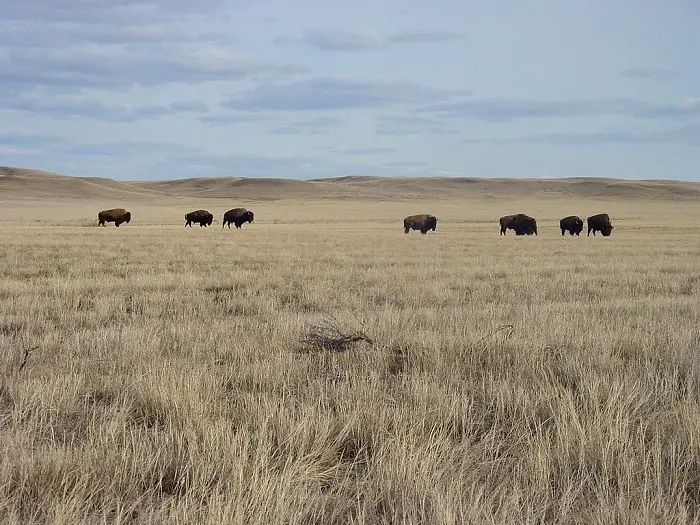
Temperate grasslands have some features of savannas, but most are treeless, except where there are rivers or streams. The biome is found in regions with relatively colder winter temperatures. Fires and grazing also limit the growth of woody plants but do not harm the belowground grass shoots.
Large grazing mammals like the bison and pronghorn of North America and wild horses and sheep in the Asian steppes are found in the biome. Because trees are sparse, many birds nest on the ground and some small mammals burrow to escape predators.
Enriched by glacial deposits and mulch from decaying plant material, the soil supports a diversity of microorganisms and small animals. Precipitation influences the height of grassland vegetation with shortgrass prairies found in relatively dry areas and tallgrass prairies occurring in wetter areas.
f. Temperate Broadleaf Forests
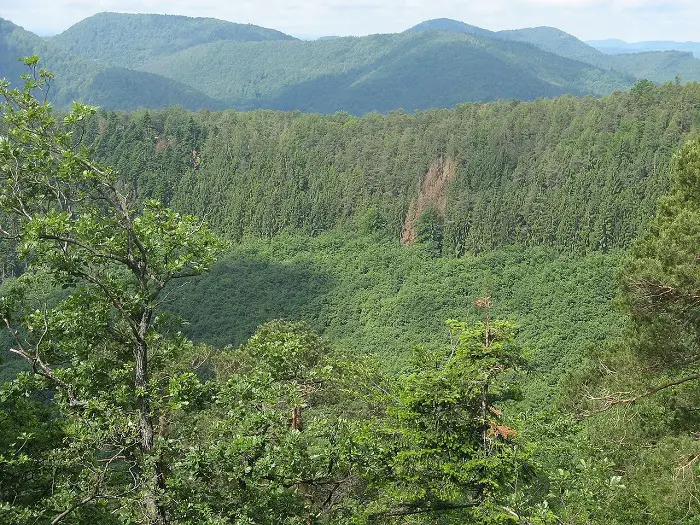
Temperate broadleaf forests grow in regions with sufficient moisture to support large trees. In the Northern Hemisphere, deciduous trees are common in these forests. The mix of tree species varies widely, influenced by different factors such as regional climate, topography, and local soil conditions.
Temperatures vary seasonally, having hot summers and cold winters. Precipitation is usually evenly distributed throughout the year as either rain or snow. Trees drop leaves and become dormant in autumn and produce new leaves in spring. The canopy is more open than that of a tropical rain forest and the trees are not as tall or diverse.
However, the soil is richer in organic and inorganic nutrients, allowing numerous invertebrates to live in the soil and leaf litter along with some vertebrates. Many birds live on trees and predators can include bobcats, foxes, black bears, and mountain lions.
g. Coniferous Forests (Taiga)
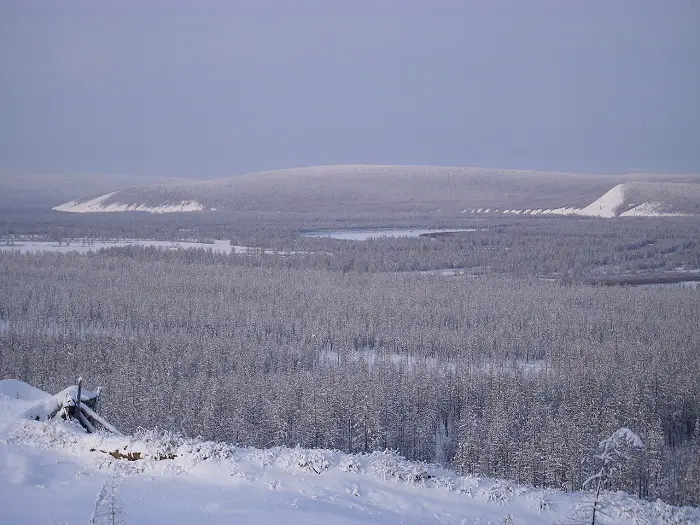
Coniferous forests are dominated by cone-bearing evergreen trees. These include the northern coniferous forests, the taiga, that stretch along the latitude across North America and Asia below the Arctic Circle. The taiga is also found at cool, high elevations in more temperate latitudes on mountains.
Taigas have long, cold winters and short, wet summers that are sometimes warm. The soil is thin and acidic, and the slow decomposition of conifer needles (leaves) makes few nutrients available for plant growth. Precipitation is mostly snow and the conical shape of many conifers prevents snow from accumulating on their branches and breaking them. Animals include moose, elk, hares, bears, wolves, and migratory birds.
The temperate rain forests on coastal North America (Alaska to Oregon) are also coniferous forests. Warm, moist air from the Pacific Ocean supports the biome which, like other coniferous forests, is dominated by a few tree species such as hemlock, fir, and redwood.
h. Tundra

Tundra covers an expanse of areas of the Arctic between the taiga and the polar ice. The climate is often extremely cold, with little light for much of the autumn and winter. The arctic tundra is characterized by a continuously frozen subsoil, the permafrost, where only its upper parts thaw in summer.
The tundra receives little precipitation like some deserts but due to the permafrost, the precipitation isn’t easily drained nor is the evaporation of land moisture quick. The permafrost also prevents plant roots from digging deeper into the soil, which explains why trees are absent in the biome. In addition, extremely cold winter air temperatures and high winds also exclude trees from growing.
High winds and cold temperatures create plant communities called alpine tundra on very high mountaintops at all latitudes. Think of the Kilimanjaro Mountain in Africa where, because of its height, there is snow on its mountain top.
Vegetation in the tundra includes dwarf shrubs, grasses (and other herbaceous plants), mosses, and lichens. Animals of the tundra withstand cold by having good insulation that retains heat. The larger herbivores include musk oxen and caribou while smaller animals include rodents called lemmings. There are a few predators too like the arctic fox and the snowy owl. Many animals are migratory using the tundra as breeding grounds in summer.
i. Polar ice
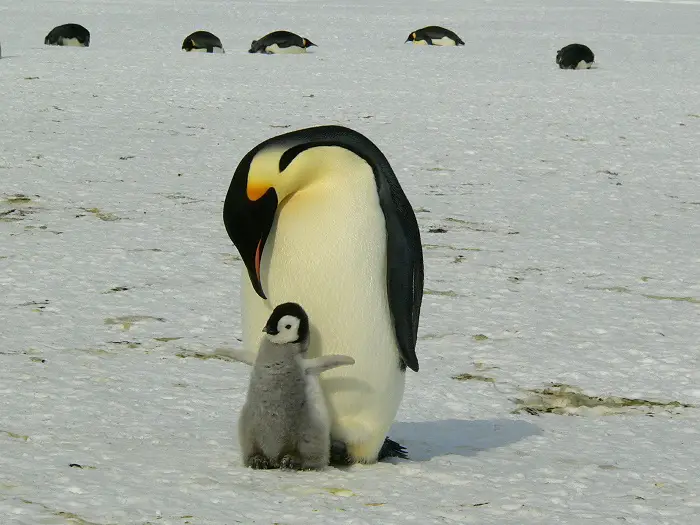
Polar ice covers land north of the tundra and the entire continent of Antarctica. The temperature in these regions is extremely cold and precipitation is very low. Only a small portion of these landmasses is free of ice or snow even during summer. Nevertheless, lichens and small plants such as mosses manage to survive. Invertebrates such as nematodes, mites, and wingless insects called springtails inhabit the frigid soil.
The terrestrial part of the biome is interconnected with its neighboring marine biome. Seals and marine birds, such as penguins, gulls, and skuas, feed in the ocean and visit the land or sea ice to rest and to breed. In the Northern Hemisphere, sea ice provides a platform for polar bears.
We have taken a look at the abiotic components of the ecosystem. In the succeeding topics, we will shift our focus on the living, biotic components and subsequently integrate the relationships between these components along with the environment.
Next topic: Concepts of Population Ecology
Previous topic: Climate and the Environment
Return to the main article: The Principles of Ecology
Download Article in PDF Format.
Test Yourself!
1. Practice Questions [PDF Download]
2. Answer Key [PDF Download]
Copyright Notice
All materials contained on this site are protected by the Republic of the Philippines copyright law and may not be reproduced, distributed, transmitted, displayed, published, or broadcast without the prior written permission of filipiknow.net or in the case of third party materials, the owner of that content. You may not alter or remove any trademark, copyright, or other notice from copies of the content. Be warned that we have already reported and helped terminate several websites and YouTube channels for blatantly stealing our content. If you wish to use filipiknow.net content for commercial purposes, such as for content syndication, etc., please contact us at legal(at)filipiknow(dot)net
